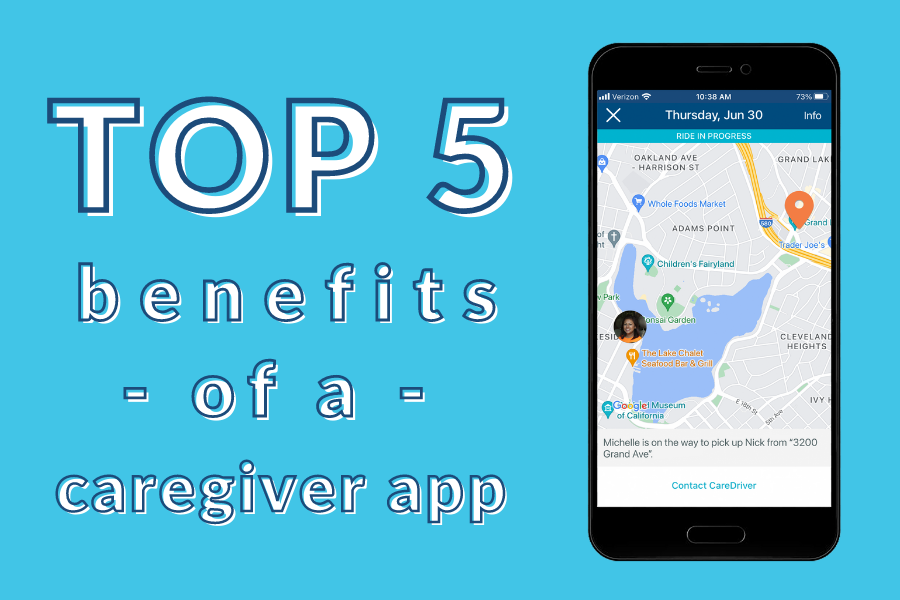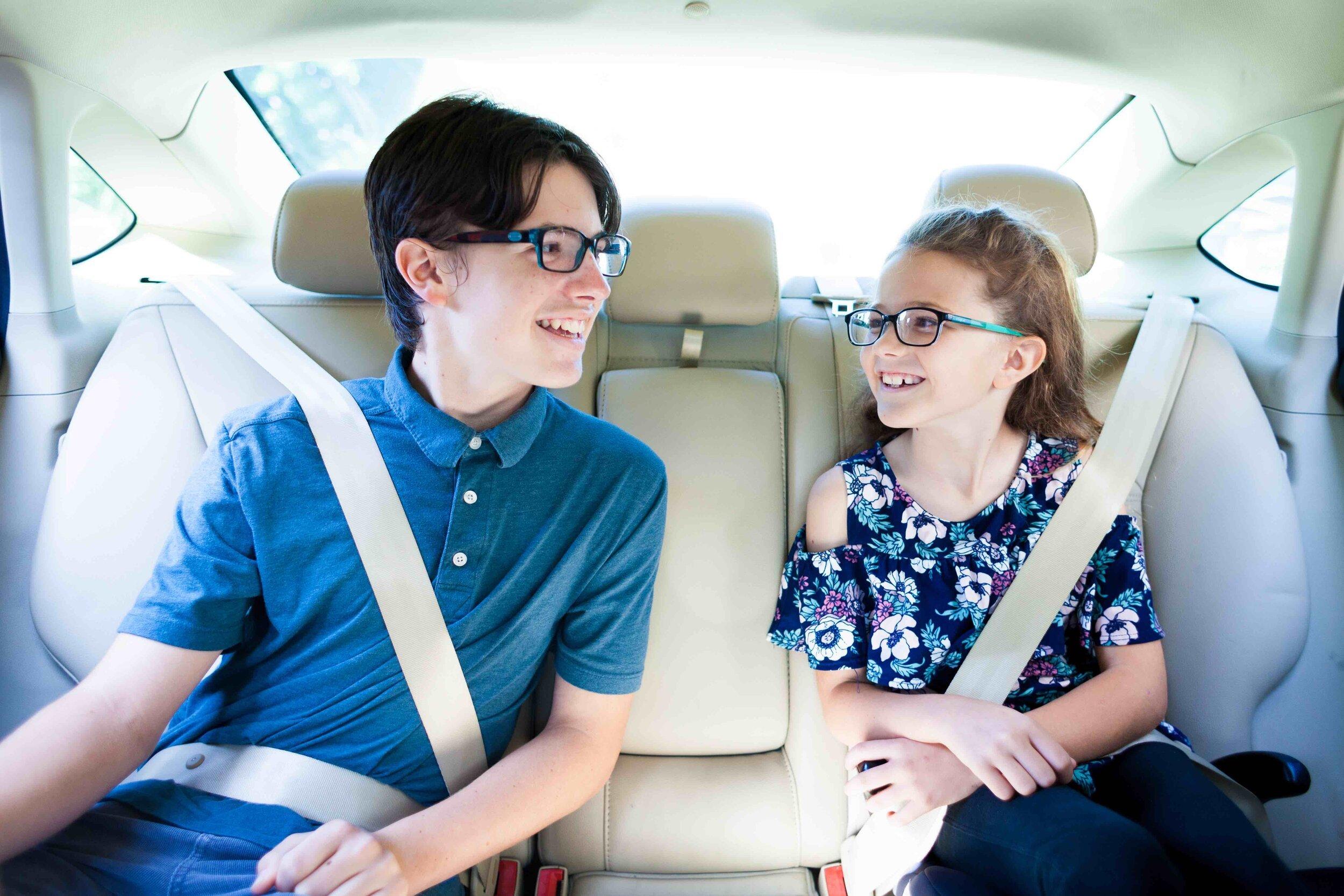[Checklist] Alternative school transportation solution
Today “safety” has taken on a new meaning and school transportation safety standards are evolving in response to COVID-19 and social distancing guidelines. If you’re just looking, seriously considering, or comparing alternative school transportation solutions , there are key product and service features that make all the difference.
We share the ways in which we meet these requirements. This will give you a tangible idea of how a solution might meet these challenges.
✅ Checklist ✅
Alternative transportation solution considerations
Does the alternative transportation solution ensure drivers have experience in childcare?
Does the company offer trauma-informed care training and other training resources for drivers?
How are they equipped for riders with special needs?
What safety measures are built into the product and processes?
Do they allow you and family/caregivers on a child’s account to track the ride?
Can you contact a support team directly to handle an issue? Can a child’s family contact a support team directly?
Are they flexible enough to meet your needs? (Do they have a flexible supply of drivers? Are you charged if you don’t meet a minimum of rides?)
What extra fees do they charge for wait times, cancellations, etc.?
What COVID-19 safety measures are built into the product and processes?
What are the social distancing policies and protections for drivers and riders? Are they following CDC and local guidelines? How will the vendor know if drivers and riders are following policies?
How will vehicles be sanitized between riders? How will the vendor ensure adherence?
How is the company tracking/reporting COVID-19 exposure?
Get the non-routine transportation solution checklist
Now, let’s go into more detail about why each of these questions is important.
1. Does the alternative school transportation solution ensure drivers have childcare experience?
We feel childcare experience is one of the most important factors to have in a potential transportation partner. Trained caregivers will be a calm and empathetic presence for kids, and have a better sense of what’s effective when approaching a child.
Riders from vulnerable populations may be in need of a little extra care on a trip. A driver with experience in childcare will be used to providing the level of attentiveness they need.
What we do: At HopSkipDrive, CareDrivers must have five years of caregiving experience to access the app.
Many CareDrivers are parents themselves, or have worked with kids as teachers, nannies, and classroom aides. This gives them a sense of what is most effective when working with children, enabling them to handle difficult situations with empathy and kindness.
2. Does the company offer trauma-informed care and other training resources?
Many children have experienced trauma in their past. We feel it’s important to provide an experience that is safe for every child to have their needs met physically, but also emotionally. Any partner you choose to provide transportation for vulnerable populations should be knowledgeable about trauma-informed care and its value.
Trauma-informed care advises caregivers to approach those in their care with the assumption that they are likely to have a history of trauma. It helps kids feel safe and comfortable because those with training know how to recognize and respond appropriately to trauma signs and symptoms. They also know how to not re-traumatize a child who exhibits these signs. For example, even something as simple as asking about the parents of a child in foster care can be upsetting.
Drivers should be able to explain and employ best practices for driving students from populations such as McKinney-Vento, youth in foster care, and students with special needs. They should also fully understand their role as a mandated reporter.
What we do: During the HopSkipDrive orientation and by connecting CareDrivers with resources, we share various techniques they can use to encourage healing and do not create additional trauma.
After the trauma-informed care training they receive, CareDrivers can explain the policy and put the best practices we share in our CareDriver training and resources to into action. These resources also help provide a consistent experience ride to ride.
Georgina used HopSkipDrive to get to school early every day from her foster home.
“Foster Youth, our lives are everywhere,” Georgina says. “There’s so much change all the time and there isn’t much stability … All [HopSkipDrive] drivers are super friendly and it’s always been a really positive experience. I was able to gain more stability, make more friends, be the old me and be happy, smiling and excited to go to school.”
3. How is the alternative transportation solution equipped for riders with special needs?
If you’re considering a partner to assist with special needs transportation, ensure they’re fully prepared to meet every Rider’s needs. The trip to school is part of the day, and an unsettling experience on the way may mean the Rider does not arrive ready to learn. This can take away valuable classroom time, which impacts the Rider and may impact other students too.
Special needs is a broad term, and the types of special needs drivers may encounter varies greatly. There are many forms from emotional disturbances, cognitive differences, and physical disabilities.
It’s important that drivers understand how important consistency is for children with special needs, such as being on time and driving smoothly. When choosing a partner, it’s important to ensure they provide additional training and resources about special needs riders.
For riders with physical issues, it’s also key to determine which drivers can accommodate them.
What we do:
HopSkipDrive works to create a consistent experience for each rider, even though they may not get the same driver. We do see the value in having driver consistency for students with special needs, and encourage clients to use the recurring ride feature. When this feature is used to schedule repeat trips for special needs students, one CareDriver may claim all or most of the trips.
Generally, students will have one to three different CareDrivers during a 90-day period, which allows them to get comfortable with a small group of trusted adults.
4. What safety measures are built into the product and processes?
Any children’s transportation solution needs to have a very stringent set of safety procedures, for the protection of children and drivers alike. This is an important aspect to look for in any potential partner, but especially for kids who may not be able to advocate for themselves.
How does your potential partner vet drivers? What are their processes when choosing drivers?
Do they have safe driving monitoring built into their app?How do they check for device use while driving or unsafe driving behavior? Do they offer feedback to drivers to improve their driving?
How does the company check for safe DMV records; do they continually check DMV and criminal records?
Is there a team monitoring rides live, who can help with any issues that may arise?
What we do:HopSkipDrive is singularly focused on the safety of all users, which includes both the Rider and the CareDriver. You will be able to track rides in real-time, with multiple points of contact throughout. Ride Organizers receive text messages when the driver is on the way, arrives, meets with the child, departs, and when the child is dropped off. Family/caregivers on a child’s HopSkipDrive account can also track rides.
We also have safety technology that alerts staff to various issues with rides, such as a late pickup. We employ third-party technology to record any events of risky driving like device use, speeding, hard turns and more. This feedback is shared with drivers on a weekly basis for iterative improvement.
5. Do they allow you to track the ride? Can you contact a support team directly to handle an issue?
Having visibility into the route of your trip is important. Any transportation solution should be able to provide some insight into your trip’s progress, and allow you to easily reach the support team if you’re concerned.
What we do: To keep riders safe, every HopSkipDrive ride is tracked live. We are alerted to any anomalies like a ride going off route or taking too long and proactively address the situation. This team will immediately communicate directly with the driver and you will be looped into any situation so that you always maintain full visibility.
You can track rides in progress using the HopSkipDrive app, and caregivers and parents will receive text messages alerting them to the progress of the ride. They can call support as well.
HopSkipDrive also uses an industry-leading third party application which records events of risky driving behaviors like cell phone use and speeding. CareDrivers are provided with a safety score on a weekly basis, and those with consistently low scores may be removed from the platform.
6. Are they flexible enough to meet your needs? Do they have an available supply of drivers? How quickly can they start rides for children?
Transportation personnel are busy, especially if you’re working with populations that change overnight. Directives and needs for these populations can change rapidly, and providing an immediate solution is key to ensuring academic progress isn’t lost.
If you’re looking for a partner to provide service to foster youth, McKinney-Vento students, and students on IEPs, you need flexibility and a rapid response.
Flexibility is key to fleet optimization, because as your needs change so does the cost. And rapid response is crucial to get kids back in the classroom asap, regardless of their current situation.
What we do: Since CareDrivers use their own vehicles, HopSkipDrive’s model is able to manage fluctuations in demand with ease. There’s no need to purchase a bus for a few students when you can have a CareDriver providing transportation the following day. Whether your needs increase or decrease, HopSkipDrive is able to provide the solution that fits.
We’re also able to add new students and book new trips with only eight hours notice.
COVID-19 Safety Considerations
7. General: What COVID-19 safety measures are built into the alternative school transportation
product
and processes?
As schools reopen, COVID-19 safety and social distancing will be at the forefront of many vendor conversations. Get clear on potential or current vendors’ COVID-19 prevention standards and guidelines. What innovations have they made in their safety processes, and how are they ensuring adherence?
What COVID-19 safety features has the alternative school transportation solution built into their app? Have they created guidelines and resources for families, schools, riders and drivers? How are they ensuring drivers are healthy enough to complete rides What are their policies on personal protective equipment? Do they require face coverings?
What we do:At HopSkipDrive, our innovative technology and in-app features bring COVID-safe ride standards to CareDrivers and enables real-time feedback from CareDrivers, Riders, and Ride Organizers.
In-app features enable CareDrivers to affirm each day that they are asymptomatic, have not been exposed to COVID-19, have taken their temperature that day, and do not have a fever prior to offering rides on the platform.
CareDrivers affirm before each ride that they have disinfected the vehicle and are wearing personal protective equipment.
Ride Organizers are asked to follow CDC and local guidelines and will also be reminded to cancel their ride if Riders show COVID-19 symptoms. Rides are limited to three Riders and no riders will be allowed to ride in the front seat for social distancing purposes.
It is also asked that Ride Organizers assist Riders, if needed, to find their ride and help into vehicle (e.g., buckling the Rider into the booster seat) to reduce contact between CareDriver and Rider.
8. During the ride: What are the social distancing policies and protections for drivers and riders? Are they following CDC and local guidelines? How will the vendor know if drivers and riders are following policies?
In response to COVID-19, the CDC released specific recommendations for transportation network companies. These recommendations include requiring drivers to wear face coverings, limiting contact between drivers and riders as well as contact between riders, cleaning and disinfecting frequently touched surfaces, and asking riders to follow CDC requirements. Ask your potential or current alternative school transportation vendor:
What are your current or potential vendors requiring of their drivers?
Will they require drivers to wear PPE?
How will they follow social distancing guidelines at pickup and drop-off?
How will they ensure guidelines are being followed?
What we do: Consistent with CDC Recommendations, CareDrivers must wear face coverings and proper personal protective equipment during rides. Riders are also asked to follow CDC and local guidelines on wearing personal protective equipment. Both CareDrivers and Riders will have the option to refuse a ride if the other party is not wearing proper personal protective equipment.
CareDrivers are encouraged to remain in the vehicle at pickup and dropoff to help reduce contact. For situations where the Rider needs assistance, Ride Organizers are encouraged to assist the Rider to and from the vehicle, if possible. CareDrivers should roll down the window about an inch or two to provide the Rider with their first/last name and secret code word once they have reached the door of the vehicle.
9. How will vehicles be sanitized between riders? How will the alternative school transportation ensure adherence?
Per CDC recommendations, drivers should have cleaning and disinfectant spray or disposable wipes and should be cleaning and disinfecting frequently touched surfaces at minimum at the beginning and end of each shift.
What we do:CareDrivers and disinfect their vehicle between rides, following CDC recommendations. CareDrivers affirm in-app before each ride that they have disinfected the vehicle.
Caregivers will be notified when their CareDriver has sanitized their vehicle and is on their way to pick up.
10. How is the alternative school transportation tracking/reporting COVID-19 exposure?
Part of prevention is to ensure quick identification of people that have come into contact with a driver or rider who shows symptoms for COVID-19. This allows them and schools/districts organizing rides to take proactive health measures to prevent further spread.
What we do: If HopSkipDrive learns that a CareDriver or Rider has been diagnosed with COVID-19 and may have exposed another member of the HopSkipDrive community, HopSkipDrive will notify that user to the extent that such notification does not jeopardize privacy interests. No personal information will be shared in the process.
11. Does the company provide drivers, riders, families and ride organizers with educational resources?
There is a lot of information out there about COVID-19 preventative measures, and it can get confusing. Does your potential or current alternative school transportation vendor offer standardized COVID-19 safety coaching for drivers? What educational resources do they connect drivers, families, riders and ride organizers with?
What we do: HopSkipDrive believes education is the key to safety; we provide COVID-Safe Ride Standards resources for both CareDrivers, Ride Organizers and families/caregivers.
In-app notifications will continue to remind Ride Organizers and CareDrivers of COVID-Safe Ride Standards and best practices.


